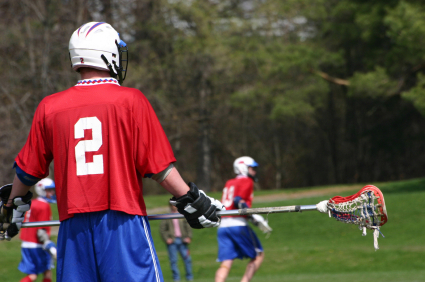 Sudden deaths due to ill-timed blows to the chest called commotio cordis are more common in the nation's fastest growing sport, lacrosse, than in any other sport, according to a new study in the September 2009 journal, Pediatrics.1
Sudden deaths due to ill-timed blows to the chest called commotio cordis are more common in the nation's fastest growing sport, lacrosse, than in any other sport, according to a new study in the September 2009 journal, Pediatrics.1
Higher risk for lacrosse players
Researchers reviewed 28 years of data in a registry maintained by Minneapolis Heart Institute Foundation on sudden death events among high school and college lacrosse players.
Among the key findings:
- 23 high school and college lacrosse players had sudden-death events between 1980 and 2008;
- Of those 23 athletes
- 19 died and 4 survived sudden cardiac arrest as a result of CPR and defibrillation;
- 14 were engaged in sanctioned high school lacrosse; 9 were college lacrosse players;
- 12 died of previously unsuspected cardiovascular diseases, including hypertrophic cardiomyopathy (HCM). 7 of the 12 had collapsed suddenly and unexpectedly, most consistent with an underlying cardiovascular abnormality.
- 10 experienced blows to the chest from a lacrosse ball which triggered sudden death or nonfatal cardiac arrest (commotio cordis). Timely defibrillation was performed in 7, with 4 surviving.
- 4 of the 10 commotio cordis events occurred in goalies, when lacrosse balls propelled at high velocity by opponents attempting shots on goal struck commercially chest protectors directly.
- The other 6 were struck in the chest by lacrosse balls thrown by other players, including 2 who were in defensive positions and intentionally used their upper body to block shots on goal.
- The mortality risk for lacrosse players as a result of commotio cordis (.63 deaths per 100,000 person-years) was significantly greater than any other sport except hockey (.53 deaths per 100,000 person-years) and baseball (.24 deaths per 100,000 person-years), even though those sports also employ hard and solid projectiles (e.g. pucks and baseballs).
The most recent death of a lacrosse player from commotio cordis occurred in February 2012, when 12-year-old Tyler Kopp, a seventh-grader in the Rochester, New York area, was hit in the chest by a ball passed by an opposing player during a game. After Tyler was hit, he collapsed to the floor and stopped breathing. Although an off-duty Rochester firefighter administered mouth-to-mouth resuscitation and paramedics began using an AED on Tyler four minutes after he was struck in an attempt to restore a steady heartbeat before taking him to the hospital, he never regained consciousness and died five days later.
Recommendations
To reduce the number of commotio cordis deaths in lacrosse, the study's authors suggest:
- Research and eventual development of a more effective chest protector (preliminary data suggest that such a chest barrier may be most effective when composed of a combination of hard polycarbonate and foam);
- Making automatic external defibrillators available at all athletic events; and
- A focused public education campaign.
1. Maron, B.J. et. al., "Commotio Cordis and the Epidemiology of Sudden Death in Competitive Lacrosse," Pediatrics 124 (3); 976-981, September 2009.
Added August 14, 2009; revised February 24, 2012









